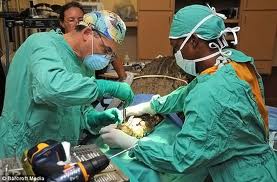We have all heard the stories of the super star who played one season too many leaving the sport at the bottom of his game rather than at the top. The physical effects of aging are well documented in the literature and we are reminded of those changes every time we pre-op a geriatric patient. As the baby boomers reach retirement age, many super star CRNAs who carried our professional torch for the past several decades are experiencing many of the physical changes that they see in their aging patient. The question arises, does the aging healthcare provider pose a safety risk to the patient? How can the skills of the aging CRNA be fairly assessed to ensure patient safety? Is aging really a problem anyway?
Canadian researcher Michael J. Tessler M.D. writing in Anesthesiology and published in the on line blog Community Health Network (Older Anesthesiologists have Higher Litigation Rates) notes:
“We found a higher frequency of litigation and a greater severity of injury in patients treated by anesthesiologists in the 65+ group. The reasons for these findings should become an active field of research.”
Click here to read the blog
An editorial published by the ASA addressed the issue of the aging Anesthesiologist. The editorial reminds the reader that the older provider brings years of experience to the job and has valuable insight to be shared with the younger providers. From the editorial:
“Older physicians, including anesthesiologists, have developed a wealth of experiences during their years in practice that regularly benefit patients,” said Dr. Warner. “The study’s findings remind all physicians that they need to understand their practices, the changes that they personally will experience as they age and the value of working with colleagues to gain continuous feedback about their personal performance in patient care.”
Dr. Warner added, “All physicians should know their personal limits and adjust their practices as they get older to best serve patients. For example, older physicians may choose to reduce the number of hours they work during the nighttime to ensure that they are well rested and alert when caring for patients.”
Click here to read the editorial
CRNAs tend to be at the front line of patient care and are found at the head of the table providing hands on care. We need to respect the knowledge and skills of our “experienced” CRNAs while, at the same time, protecting the safety of the patient.
Here is the question for procrna.com readers: How do we assess the continued competency of the aging CRNA? Use the comments box below.
